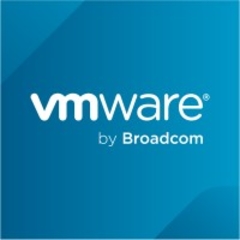
Technical Architect at a tech company with 1,001-5,000 employees
VMware ESXi rocks
What is most valuable?
Brilliant hyper-visor with proven virtualization stack.
What needs improvement?
You need to learn the internals of the system to really customize and reap all benefits.
Disclosure: My company does not have a business relationship with this vendor other than being a customer.
Developer at a university with 51-200 employees
Formerly the Leading First Generation, Free of Charge Virtualization Server of VMware
Valuable Features:
• VMware server is a free hosted virtualization server which runs on top of various operating systems such as Linux, Solaris, Windows and Netware
• It separates single physical server into various virtual machines which can be deployed many times
• The installation of the server no longer requires hardware configuration
• It serves as a testing environment for experimental OS, patches and softwares but does not need installation or any configuration
• It can automatically starts virtual machine at system boot
• It can also take full control of virtual machines from remote computers
• It provides a complete GUI VMX editor
• It allows virtual machines to use two VSMP processors
• VMware server 2.0 has Web Management Interface which is used to easily manage virtual machines
Room for Improvement:
• VMware has lesser functionality than the proprietary VMware ESX
• VMware server does not fully control the scheduling of hardware resources because the complete control falls into the underlying operating system
• VMware Server Support ended on June 30, 2011
Disclosure: My company does not have a business relationship with this vendor other than being a customer.
Precise but to the point. VMware Server is an excellent virtulization product. However, lack of support since the end of June in 2011 was quite a blow. This has seen many businesses switch to use VMware ESX for their virtualization needs.
Buyer's Guide
VMware vSphere
October 2025
Learn what your peers think about VMware vSphere. Get advice and tips from experienced pros sharing their opinions. Updated: October 2025.
872,655 professionals have used our research since 2012.
Student at a university with 501-1,000 employees
The best product of VMware.
Valuable Features:
Easy to use and manage.
Room for Improvement:
More tutorials to use the tool.
Disclosure: My company does not have a business relationship with this vendor other than being a customer.
Have you used vpshere software to connect ESX host or is there any other software available too?
Senior Manager of Infrastructure at a non-tech company with 1,001-5,000 employees
vSphere Review
Valuable Features:
- Enterprise class solution
- Live Migration (both server and storage)
- High Availability and Load Balancing
- Disaster Recovery
- Lots of 3rd party vendor support
- Excellent technical support
Room for Improvement:
- Cost
- Lack of support for virtualization (all hypervisors)
- Licensing- Started with VMware ESX ver 2.1 in 2004. Currently
using vSphere 4.1i and working on upgrade to 5.1
- Chose VMware for several reasons
(1) Had experience with Desktop and GSX products
(2) Ran on bare metal
(3) No other real competitors at the time
Other Advice:
Advice:
- VMware is not the only game in town anymore
- Look at your requirements:
- If you are a small to medium shop other server virtualization products may provide what you need
- If you are a large shop I would recommendVMware
Disclosure: My company does not have a business relationship with this vendor other than being a customer.
it_user6186Independent Analyst and Advisory Consultant at Server StorageIO - www.storageio.com
Top 10Consultant
When you say a con is lack of virtualization (all hypervisors), can you elaborate?
I have multiple hypervisors running nested on my VMware vSphere environment (works better with 5.5).
Otoh, if you are referring to being able to manage other hypervisors with native vSphere (e.g. client), then fair point as you would have to add the multi hypervisor manager download part of vCenter to be able to do that.
However as you say, many options, Hyper-V is often overlooked or perceived to be expensive as from Microsoft which is not always the case. Likewise there is Xen and KVM among others. From a management perspective you can also do things such as layer OpenStack compute over different hypervisors (e.g. Hyper-V, vSphere/ESXi, KVM, etc). Hence explore your options.
Senior Manager of Infrastructure with 1,001-5,000 employees
Our current virtualization standar platform, but Hyper-V 2012 version functionality appears to gain on VMware vSphere
Valuable Features:
Key business drivers and benefits for us:
• Co-location data centers environmental costs are greatly reduced (rack space, power, cooling).
• Allows better utilization and flexibility to segment physical resources (vCPU & vMemory)
• Consolidate / centralize management of all Windows and Linux infrastructure
- Administer entire virtual environment via a single pane of glass (vCenter)
- Provisioning of VMs is really simple and quick. Allows easy use of templates.
- Utilize Distributed Resource Scheduler (DRS) & VMotion
- Optimizes performance of VMs
- Allows flexibility for patching cycles to minimize downtime.
• VMware product has been very stable
• Allows for easier compliance and consistency for meeting IT audit controls
• Initial ROI analysis a few years ago did show significant savings over physical model. We are looking at updated ROI and show-back / charge-back models currently.
Room for Improvement:
VMware product challenges / Areas for improvement:
• Advanced Capacity Management and Performance Management & Analysis, Disaster Recovery, and private cloud capabilities are lacking out of the box for enterprise-level deployments.
- Ability to “right-size” resources on all VMs is needed at enterprise installations.
- Add-on / 3rd party products like vCenter Operations / VMturbo, SRM, or vCloud may be needed.
- These add-on products add management complexity. They also add licensing and maintenance costs for the overall solution in a tough budget climate.
• Difficulty using VMotion with Microsoft Clusters. We utilize clusters for our large SQL Farm, but we are unable to use VMotion during patching efforts. We are now looking at Hyper-V or physical servers for this functionality to minimize downtime.
• Granting administrative privileges / roles can be a bit more tedious than are initially apparent.• VMware vSphere 5 is current architectural standard for 2 data centers
- VMware was the major virtualization solution provider when first implemented years ago
- Microsoft 2012 Hyper-V “proof of concept” is currently in progress for US
- Educational discounts from Microsoft are significant
- Microsoft Hyper-V 2012 version functionality appears to gain on VMware vSphere
• Also have a large Solaris UNIX environment utilizing Solaris Zones.
• VMware (or Hyper-V) will enable us to drive a re-platforming effort for Solaris -> Linux
Other Advice:
Things to consider before purchasing VMware or Hyper-V:
• Understand your virtualization objectives and requirements before purchase. Assess all requirements against VMware or Hyper-V licensing cost and edition functionality
• Define a strategy for resource intensive applications (large CPU or memory requirements) and when to stay standalone vs. virtual
• Implement processes to control “VM sprawl” as VM provisioning process is so simple.
• Consider other process efficiencies that virtualization may drive (i.e. Service Catalog)
• Ensure IT staff gets proper training. The learning curve can be steep initially at the enterprise level.
• If possible , look at processes for show-back or charge-back model early on to assess costs and ROI.
Disclosure: My company does not have a business relationship with this vendor other than being a customer.
* User friendly and not complex.
* Easy to...
Valuable Features:
* User friendly and not complex.
* Easy to deploy, manage and troubleshoot.
* Scalability and stability.
* Highly recommended for mission critical applications and databases.
* Aggressive in educating their clients.* User friendly and not complex.
* Easy to deploy, manage and troubleshoot.
* Scalability and stability.
* Highly recommended for mission critical applications and databases.
* Aggressive in educating their clients.
Room for Improvement:
VMware should compete against their competitors in terms of Pricing. Hopefully, they can value add some features without any additional cost.
Disclosure: My company does not have a business relationship with this vendor other than being a customer.
vSphere is indeed the best in the market as a result of its web interface and compatibility with different OS (among other excellent features). Web based programs and applications are the in thing in the modern market of this kind.
Head of Data Center at a tech company with 51-200 employees
An excellent product with proven track record. Plan properly the deployment and use as this products is expensive.
Valuable Features:
VMware vSphere is a proven product with an established track record. We bought it as part of our server system upgrade project to accommodate our new student management system from Oracle. At first, we had a taste of vSphere as part of a demonstration system. We got to play around with it and really liked its features and the capabilities that it can bring to our organization.VMware is also a Cisco partner, and as such Cisco has a validated design for using vSphere together with their blade servers for Oracle PeopleSoft. This was critical in selecting vSphere as our virtualization platform foundation, as the application which we envisioned to run on the servers is fully tested and verified by Cisco and Oracle to work with vSphere.
Room for Improvement:
With all the desirable features of vSphere and its proven track record, its no wonder that it's also the most expensive virtualization platform out there. This is the first major disadvantage when using VMware. Other vendors have competing products with similar capabilities. However, these products are not proven and tested.Another thing to watch out for when using vSphere is that you really need to plan your deployment and use thoroughly. With the high cost associated with this product, proper diligence must be taken in the planning on how to use this product to achieve the desired results.Lastly, make sure the hardware that you run vSphere on is fully supported. Hardware compatibility issues can limit the functionality of vSphere or worse render the hardware useless.Despite the inherent high cost associated with using this product, I will still highly recommend this for use in production environments. The benefits that will be enjoyed far outweighs the consequences as long as proper planning is done.
Other Advice:
It is also recommend to get a reliable partner for integrating the software with the hardware system. As vSphere has numerous features, an inexperienced integrator or un-trained in-house administrator might not be able to configure fully all features necessary to maximize the product.
Disclosure: My company does not have a business relationship with this vendor other than being a customer.
Partner at a tech services company with 51-200 employees
Ease of use, functionality, established product, works very...
Valuable Features:
Disclosure: My company is a VMware reseller.
Ease of use, functionality, established product, works very will with almost any prime time OS, very thought-out application, works with the developer community to improve, has deep pocket organization like EMC to help propel them into the future
Room for Improvement:
Moved away from local/domain end-user authentication to a single-sign on authentication mechanism, introduced a single-point of failure, added additional complexity that came be overcome with proper training
Disclosure: My company does not have a business relationship with this vendor other than being a customer.
it_user4524Founder & Principal Architect at a tech services company with 1,001-5,000 employees
Consultant
I keep up with VMware certifications. The entry point on their certifications, the VCA, does not require an official VMware class as a pre-req before you take the exam. The VCP, however, does require an official VMware class before you can take the exam. They are trying to keep the quality of the certification recipients at a premium.
Buyer's Guide
Download our free VMware vSphere Report and get advice and tips from experienced pros
sharing their opinions.
Updated: October 2025
Product Categories
Server Virtualization SoftwarePopular Comparisons
Proxmox VE
Hyper-V
Red Hat OpenShift
Oracle VM VirtualBox
Nutanix AHV Virtualization
Oracle VM
Citrix XenServer
IBM PowerVM
XCP-ng virtualization platform
OpenVZ
Virtuozzo Hybrid Server
ISPsystem VMmanager
Buyer's Guide
Download our free VMware vSphere Report and get advice and tips from experienced pros
sharing their opinions.
Quick Links
Learn More: Questions:
- VMware ESXi or VMware Workstation?
- What is the biggest difference between KVM and vSphere?
- VMware vs. Hyper-V - Which do you prefer?
- How does VMware ESXi compare to alternative virtualization solutions?
- VMware has been positioned in the Leaders Quadrant of Gartner’s Magic Quadrant for four years. Agree/Disagree? Why?
- Proxmox vs ESXi/vSphere: What is your experience?
- Oracle VM vs. latest VMWare?
- Which is the most suitable blade server for VMware ESXi?
- What do each of the VMware and Citrix products do?
- What is the biggest difference between Nutanix Acropolis and VMware vSphere?
















That's for sure @Kleegeek.